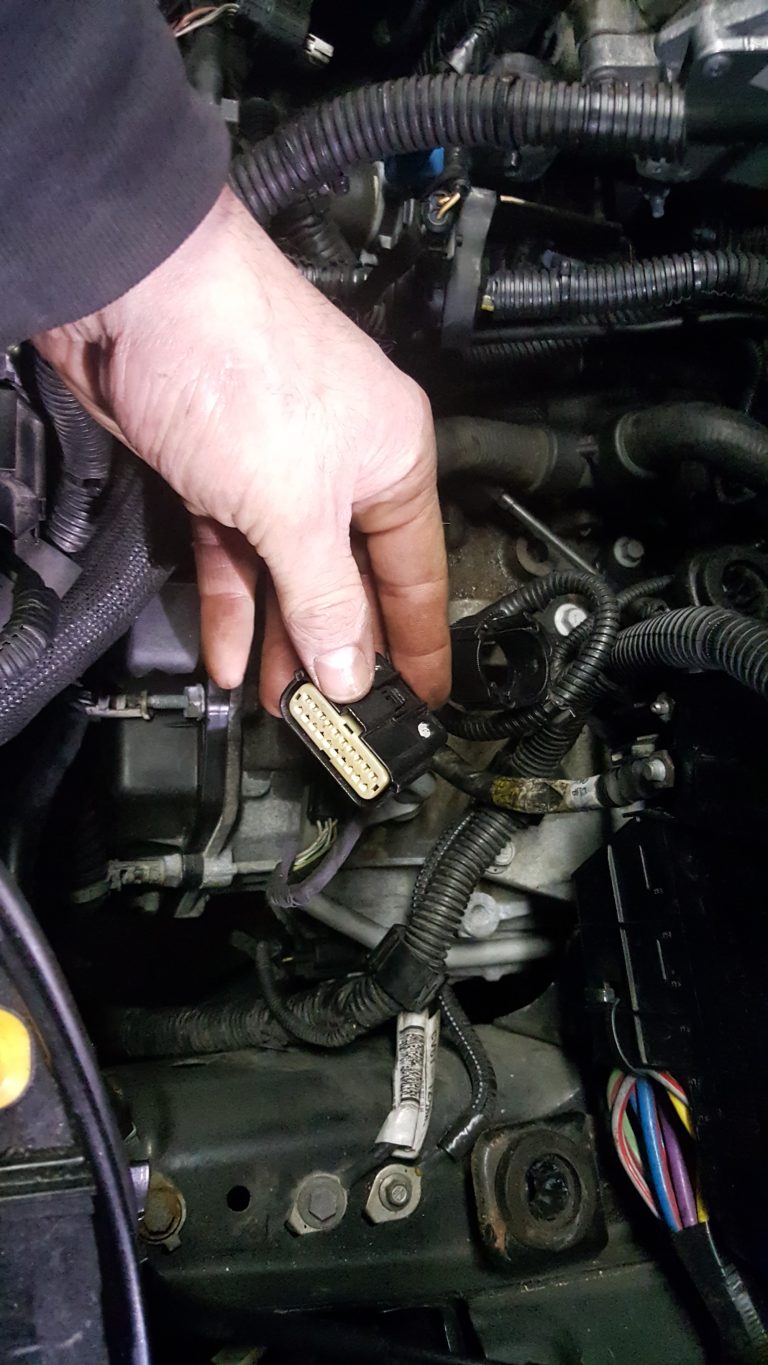How To Check Transmission Fluid 2018 F150
Understanding how to properly maintain your 2018 F150, particularly when it involves something as crucial as checking the transmission fluid, is an essential skill for all Ford owners, DIY enthusiasts, mechanics, and anyone keen on Ford maintenance. In this insightful piece, we guide you on how to effectually check the transmission fluid of your cherished pick-up truck, ultimately ensuring its long-life and optimal performance. Irrefutably, this comprehensive guide serves as valuable knowledge for making informed decisions regarding your vehicle’s maintenance, and as such, is a necessary read for every Ford aficionado. Additionally, it is vital to also regularly check the rear differential fluid level to ensure smooth operation of your 2018 F150. Neglecting to maintain the proper fluid levels can result in costly repairs and potential damage to your vehicle’s transmission and differential system. By following these simple maintenance procedures, you can keep your F150 running at its best for years to come.

Understanding the Importance of Transmission Fluid
Your vehicle’s transmission is notably one of its most complex and critical systems. It is responsible for shifting gears and ensuring that the vehicle moves optimally, providing the right amount of power to your wheels at any given speed. Transmission fluid plays a pivotal role in the proper functioning of this system.
The Role of Transmission Fluid in Your F150
In your Ford F150, transmission fluid serves a multitude of purposes. It lubricates all moving parts to reduce friction and prevent overheating, which would otherwise lead to wear and tear. Additionally, it acts as a coolant and a conductor of power, enabling your truck to run smoothly and optimally. In essence, your F150 transmission fluid is instrumental in ensuring durability and high performance.
Signs of Low or Bad Transmission Fluid
Recognizing the signs of low or substandard transmission fluid can save you from hefty repair costs in the future. These signs often include issues with shifting gears, such as delayed gear shifts, slipping out of gears or shaking during gear changes. There might also be unusual noise (grinding or whining) or a burning smell. Furthermore, the vehicle’s overall performance can be affected, with decreased fuel efficiency and power output.
The Impact of Neglected Transmission Fluid Checks
Neglecting to check your F150’s transmission fluid regularly can have detrimental effects. The health of your transmission is largely dependent on the quality and level of the fluid. Over time, the fluid can deteriorate and lose its efficacy, leading to overheating, increased friction, and consequently, damage to your transmission. This could result in costly repairs and even complete transmission replacement if not addressed promptly.
Knowing When to Check Transmission Fluid
Regular checks of your F150’s transmission fluid are essential to maintaining the longevity and performance of your vehicle.
Ideal Frequency to Check Transmission Fluid
For optimal results, we recommend checking your transmission fluid monthly. Routine checks will ensure that you spot potential issues early, preventing more substantial damage to your F150’s transmission system.
When to Check Following Heavy Usage or Prolonged Drives
If your vehicle undergoes heavy usage, such as towing or frequent long-distance drives, it warrants more frequent checks. This is because consistent high-load driving can strain your transmission and degrade the fluid more rapidly, potentially leading to damage.
Specific Conditions That Warrant More Frequent Checks
Certain conditions, such as driving in extreme weather (hot or cold), abrupt start-and-stop driving, or if your truck is of high mileage, would necessitate more frequent checks as each of these can accelerate the deterioration of transmission fluid.
Gathering the Necessary Tools
To ensure a successful and safe transmission fluid check, you will require a certain set of tools.
List of Tools Needed to Check Transmission Fluid
Some essentials include a durable pair of gloves to protect your hands from hot surfaces, a clean, lint-free cloth or paper towel for wiping the dipstick, and a funnel for any fluid additions.
Choosing the Correct Transmission Fluid for Your 2018 F150
Choosing the right transmission fluid is crucial as different vehicles require different types. For your 2018 F150, consult your owner’s manual or contact a Ford dealer to ascertain the correct fluid type.
Safety Equipment Recommended for The Task
Safety equipment, including protective eyewear, gloves, and clothing that covering your skin, is highly recommended while handling transmission fluid as these can protect you from potential splashes or spills.

Locating the Transmission Dipstick in Your F150
The transmission dipstick is a vital tool for checking your F150’s fluid level.
Step by Step Guide to Finding the Transmission Dipstick
The dipstick is typically located towards the rear of the engine compartment. It’s typically marked with a ring or tag, or labeled as ‘transmission’ or ‘trans.’ If you are unable to find it, consult the owner’s manual for its location.
Understanding the Markings on the Dipstick
The dipstick will have two key markings: one for the ‘max’ (maximum) and another for the ‘min’ (minimum). The fluid level should fall within these markings. If the fluid level is below the ‘min’ marking, it indicates the need for fluid addition.
What to Do if You Can’t Find the Dipstick
If for any reason you’re unable to locate the dipstick, it may be best to take your vehicle to a professional mechanic or service center.
Procedure to Check Transmission Fluid Level
Checking transmission fluid level is a relatively straightforward process if done correctly.
Initial Steps for Checking Fluid Level
To start, ensure that the vehicle is parked on a level surface and the engine is running at normal operating temperature. With the parking brake applied, transition the vehicle through all the gears before placing it back into park.
How to Correctly Read the Transmission Fluid Level
Remove the dipstick, wipe it clean with the lint-free cloth, then reinsert it fully before pulling it back out to read the level. The fluid level should be between the ‘max’ and ‘min’ markings on the dipstick.
Mistakes to Avoid When Checking Fluid Level
Avoid checking the fluid level when the engine is cold or immediately after driving, as this can offer misleading readings. Furthermore, try not to overfill the fluid, as this can lead to frothing, which may cause erratic shifting, oil starvation, or transmission damage.
Understanding What the Transmission Fluid Color Indicates
The transmission fluid color can reveal a lot about its condition and thus, the health of your transmission.
What The Color of The Fluid Tells You
New or good transmission fluid is typically bright red and translucent. As it ages, it becomes darker and could turn brown or eventually black as contaminants build up.
How to Identify Burnt or Dirty Fluid
Burnt fluid is often noticeably darker in color and may have a burnt smell, indicating overheating. Dirty fluid, on the other hand, would be murky due to the contaminants, potentially signaling wear or damage in the transmission.
The Significance of a Transmission Fluid’s Smell
A burnt smell could be a sign of overheating, whereas a sweet or tart odor is normal. However, if the fluid smells rancid or very foul, this could be an indication of a serious issue.
Draining and Replacing Transmission Fluid
Just like engine oil, transmission fluid also needs replacement after a certain period or mileage.
When Should Transmission Fluid be Replaced
Generally, it’s recommended to replace your fluid every 30,000 to 60,000 miles. However, this frequency could vary based on factors like driving habits, the vehicle’s age, and type of transmission fluid used.
Instructions to Safely Drain Old Transmission Fluid
Draining transmission fluid should ideally be done by a professional as it involves lifting the vehicle and removing the drain pan, which could be messy and risky without the right tools and expertise.
Adding New Transmission Fluid to Your F150
After draining, new fluid can be added through the dipstick tube, using a funnel to prevent spillage. Ensure that you add the right quantity as mentioned in your vehicle’s user manual and check the fluid level after adding.
What to Do if Transmission Fluid is Low
Low transmission fluid can be a cause for concern, as it might compromise the functioning of the entire transmission system.
Understanding the Risks of Low Transmission Fluid
Low fluid levels can often lead to insufficient lubrication, overheating, and potentially severe transmission damage. Therefore, maintaining the appropriate fluid level is paramount for the longevity of your vehicle’s transmission.
Instructions to Add More Transmission Fluid
If your fluid levels are found to be low, cautiously add fluid through the dipstick tube using a funnel until it reaches the correct level between the ‘min’ and ‘max’ markings on the dipstick.
How Much Fluid to Add if Level is Low
The amount to be added would depend on how low the fluid level is. It’s best to add slowly, checking the level intermittently to ensure you don’t overfill.
Addressing Transmission Fluid Leaks
Transmission fluid leaks need immediate attention as they can quickly lead to low fluid levels and subsequent transmission problems.
Identifying Signs of a Transmission Fluid Leak
Spotting a red liquid under your vehicle or seeing a lower than usual fluid level multiple times can be a sign of a leak. Additionally, if you notice your vehicle slipping out of gears or behaving sluggishly, it could suggest a leak.
What to Do if You Suspect a Leak
If you suspect a leak, we advise seeking immediate professional help. Continuing to drive with a leaking transmission can be dangerous and might damage the transmission system further.
Steps to Fix or Address a Fluid Leak
The first step in identifying a leak’s source, which could range from a loose pan to a damaged seal, then proceed to fix it. It would typically involve replacing gaskets or seals, tightening bolts, or replacing damaged parts. It’s recommended this be done by professionals to ensure a comprehensive fix.
Pro Tips on F150 Transmission Fluid Maintenance
Maintaining your F150’s transmission fluid at optimal condition plays a vital role in the longevity and performance of your truck.
Mechanic-Endorsed Best Practices
Regularly checking your transmission fluid levels, understanding what the fluid’s color says about its quality, and knowing when it’s time to replace the fluid are good practices endorsed by experienced mechanics.
Tips for Maintaining Optimum Transmission Fluid Levels
Apart from routine checks and replacements, ensure you use the correct type of fluid and always maintain the fluid level within the ‘min’ and ‘max’ markings on the dipstick to ensure optimal performance.
Effective Maintenance Schedule for Your 2018 F150’s Transmission Fluid
Your vehicle’s user manual would usually provide an effective maintenance schedule, which you should adhere to closely. Depending on various factors, this could be every 30,000 to 60,000 miles. However, if your truck is subjected to severe conditions, you might need to check and replace the fluid more frequently.
In conclusion, ensuring your transmission fluid remains in good condition and at the appropriate levels is crucial for optimal vehicle performance and longevity. Regular checks, following best practices, and maintaining a routine check and replacement schedule would go a long way towards achieving this.




